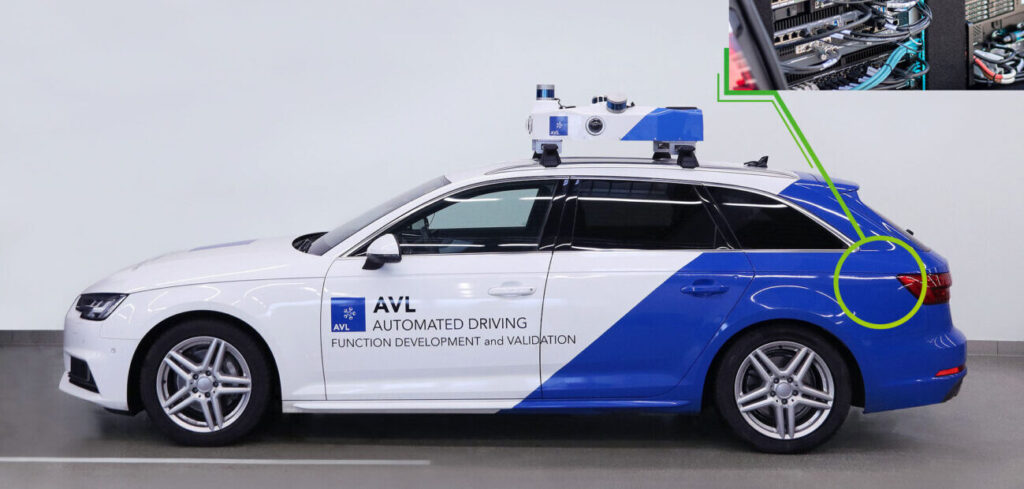When it comes to developing and validating driver assistance systems (ADAS) and automated vehicles (AD), data-driven processes are indispensable. The tools and methods used generate huge volumes of data. This ‘flood’ of terabytes (TB) poses major challenges to ADAS/AD customers. Testing specialist AVL and data logging and analytics developer b-plus now offer an integrated overall solution to this, with which data acquired during real journeys can be efficiently recorded, managed and processed.
It requires many representative test drives in the most realistic environments possible to control the performance of ADAS/AD sensors and driving functions. The higher the degree of automation (SAE level 0 to 5) of the car, the more this applies. Nevertheless, the companies state that it is possible to implement cost-efficient and reliable validation methods – for example, through objective comparisons between vehicle cognition and a high-precision environmental reference, also known as ground truth.
The AVL Dynamic Ground Truth System (DGT) enables 360° environment recognition, which is completely independent of the test vehicle’s sensors. Lidar sensors, high-resolution cameras and GNSS systems record the environment around the test vehicle and generate a continuous data stream of 1TB per hour. At the same time, the sensor data from the test vehicle is also recorded in the DGT system, which means a similar volume of data.
In practice, the data continues to mount up: more than 20TB per vehicle is the norm in a standard eight-hour shift. Global driving campaigns, which typically use 20 or more vehicles, soon reach volumes of around 0.5 petabytes (PB) per day. These figures illustrate just how important an efficient and high-performance validation environment is to a successful safeguarding.
“Data-driven development is a key method in the development and validation of ADAS/AD systems. With the AVL Ground Truth data recording system, the high-performance b-plus data logger and the analysis platform from AVL, it is possible to call upon a standardized and scalable environment for the implementation of this method,” said Steffen Metzner, product manager in the field of ADAS/AD Testing Solutions at AVL.
The DGT system handles this flood of data using Brick 2 from b-plus. This integrated data logger synchronously records the input from reference systems and vehicle sensors. In the subsequent processing, performance and scalability are key: using b-plus CopyLynx, the data is automatically transferred to a high-performance computer center or a corresponding data cloud, where the AVL ADAS/AD Analytics Platform (AAP) immediately organizes and analyses it.
“For our customers in the ADAS/AD environment, it is increasingly important to have access to high-quality data, which can be used as a basis for their data-driven development. The combination of the AVL reference sensor system and the hardware and software toolbox from b-plus is a comprehensive solution stack. Our technologies complement each other perfectly, in order to gather large volumes of data and transfer it to the data center,” said Stefan Rankl, key account Manager at b-plus.


